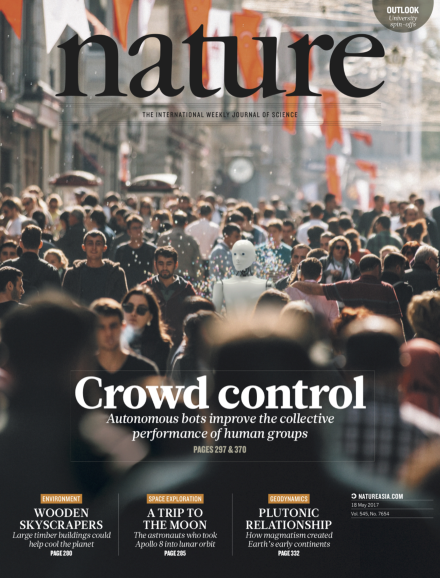Volume 545 Issue 7654, 18 May 2017
Editorial
World View
Seven Days
News
News Feature
Comment
Books & Arts
Correspondence
Correction
Obituary
News & Views
Article
Letter
Feature
Column
-
A mentor’s acid test
Career Guide:
Futures
Outlook
-
Therapeutic developments: Masters of medicine
Nature Outlook:
-
Software: Picture perfect
Nature Outlook:
-
Materials and engineering: Rebuilding the world
Nature Outlook:
-
Clinical devices and services: Repair shops
Nature Outlook:
Spotlight
-
The genetic microscope
Spotlight:
-
China's Silicon Valley
Spotlight:
Supplement
-
Career guide Melbourne
Career Guide:
-
Q&A: Victoria Blair
Career Guide:
-
Q&A: Jim McCluskey
Career Guide:

